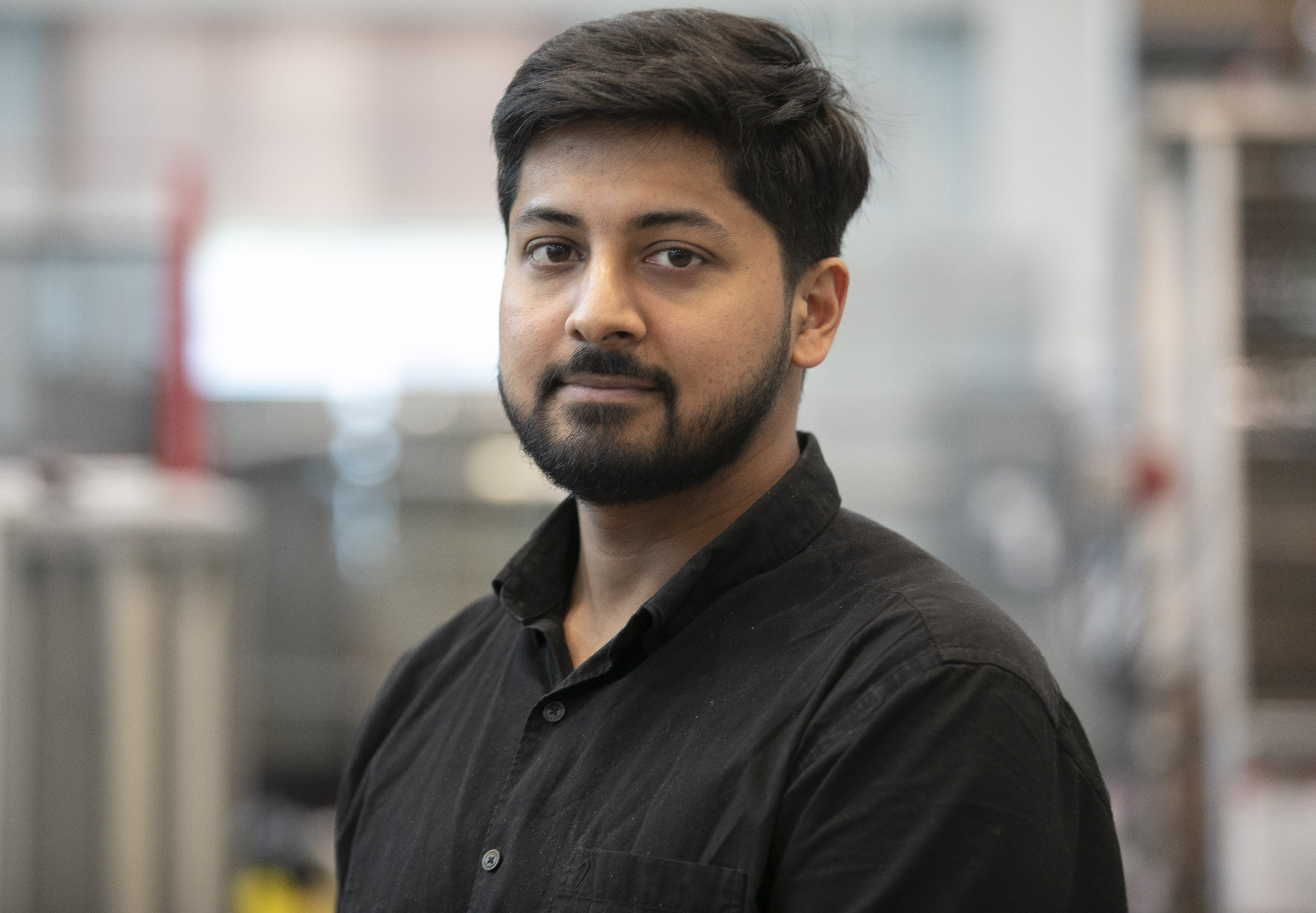
A team from NC State won the Student Innovative Paper Award from the American Society of Mechanical Engineers (ASME) in the Microelectromechanical Engineering Division at the 2023 International Mechanical Engineering Congress & Exposition in New Orleans. Doctoral students Sourish Sinha (ECE) and Pouria Zaghari (MAE) won for their paper, “Finite Element Analysis and Fatigue Life Prediction of a Laterally Conducting GaN-Based Power Package Under Thermal Cycling.”
Research Summary: Tackling Thermomechanical Challenges in WBG Materials
Wide Bandgap (WBG) devices such as gallium nitride high electron mobility transistor (GaN-HEMT) are gaining significance in electronic packaging due to their superior electrical properties. However, the increased power density in GaN-based electronic packaging, coupled with the coefficient of thermal expansion (CTE) mismatch between components of different materials, presents a significant challenge to the thermomechanical reliability of these power electronics.
The research team focused on the intricacies of finite element analysis (FEA) to predict the fatigue life of GaN-based power packages under thermal cycling conditions at elevated temperatures. This exploration is pivotal for the advancement of WBG power electronics, ensuring their design and performance withstand the rigors of real-world applications.
Practical Applications: Advancing Thermomechanical Performance in Power Electronics
Almost 55% of electronic package failures stem from elevated temperature and thermomechanical stress. The NC State research team’s work not only identifies this critical issue but also provides a pathway for practical solutions. By analyzing power electronic devices and predicting their reliability under challenging conditions, the team’s multidisciplinary efforts lay the foundation for the development of more reliable and higher-density power electronics circuits.
The practical implications of this research extend beyond the confines of the laboratory, offering industry professionals valuable insights into enhancing the performance and longevity of electronic packaging in high-power applications.
The Supportive Environment at NC State: A Catalyst for Success
Sinha and Zaghari credit the success of the research to the supportive environment provided by NC State. Advisors Paul Franzon (ECE), Douglas Hopkins (ECE), and Jong Eun Ryu (MAE) played instrumental roles in guiding and mentoring the team, providing invaluable insights into the intricacies of their research focus.
Furthermore, the state-of-the-art facilities at NC State, particularly the ‘PREES Electronic Packaging Lab,’ played a pivotal role in the advancement of this research. The well-equipped lab provided an optimal environment for fabricating electronic packaging devices, fostering an atmosphere conducive to innovation and experimentation.
Team Contributions: A Collaborative Effort Toward Excellence
The success of the project is a testament to the collaborative efforts of each team member. Sourish focused on the electrical design layout of the module, ensuring optimal electrical electromagnetic interference (EMI) performance. Additionally, he played a crucial role in designing a double-sided cooled power module capable of functioning under high ambient temperatures. His contributions also encompassed material selection for the module and the verification of its thermal performance. Zaghari spearheaded the conceptualization, thermomechanical finite element analysis, and the drafting of the original manuscript.
A Taste of Success: A Recognition of Efforts and Inspiration for the Future
Upon receiving the award, Sourish and Zaghari expressed a profound sense of validation, saying “Receiving the award was a recognition of our efforts and contributions. It surely increased our eagerness for future research by validating the significance of my work and inspiring me to continue exploring new frontiers in this field.”
The research team’s triumph at the 2023 International Mechanical Engineering Congress & Exposition signifies a major stride in the realm of WBG materials and electronic packaging. Their work not only addresses existing challenges but also opens doors to a future where power electronics can thrive under demanding conditions, pushing the boundaries of what is currently achievable in the field.